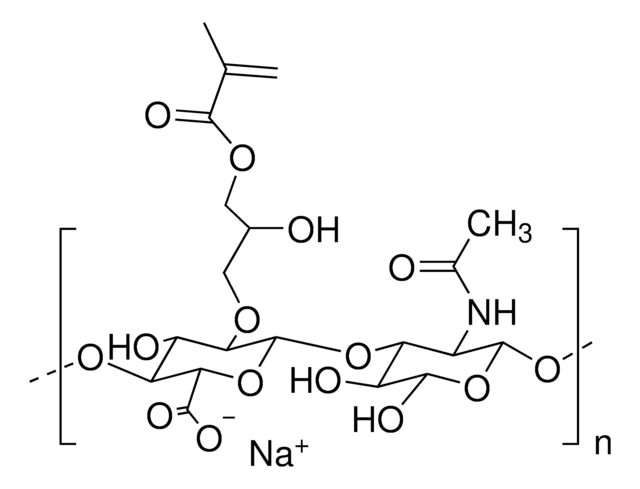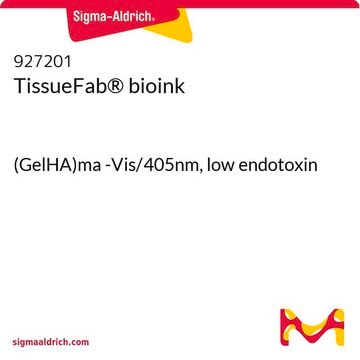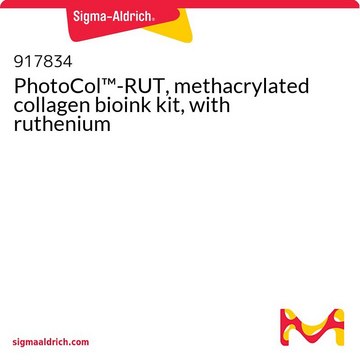916471
PhotoHA™ -LAP, methacrylated hyaluronic acid bioink kit, with LAP
Sinónimos:
3D Bioprinting, Bioink, HAMA, Hyaluronic acid
Iniciar sesiónpara Ver la Fijación de precios por contrato y de la organización
About This Item
Código UNSPSC:
12352201
NACRES:
NA.23
Productos recomendados
descripción
Methacrylated collagen:
Degree of methacrylation: ≥45-65%
Nivel de calidad
esterilidad
sterile; sterile-filtered
temp. de almacenamiento
−20°C
Aplicación
PhotoHA™ -LAP bioink kit consists of methacrylated hyaluronic acid (HAMA) and LAP photoinitiator. Hyaluronic acid is the most abundant glycosaminoglycan in the body being an important component of several tissues throughout the body. While it is abundant in extracellular matrices, hyaluronic acid also contributes to tissue hydrodynamics, movement and proliferation of cells, and participates in a number of cell surface receptor interactions. The photoinitiator consists of LAP to be formulated in 1X cell culture media or PBS, which allows blue light photocrosslinking of the printed structure at 405 nm. PhotoHA™ -LAP provides native-like 3D HA gels, and the final gel stiffness can be customized by changing HA concentrations and crosslinking.
Información legal
PhotoHA is a trademark of Advanced BioMatrix, Inc.
Código de clase de almacenamiento
11 - Combustible Solids
Clase de riesgo para el agua (WGK)
WGK 3
Elija entre una de las versiones más recientes:
Certificados de análisis (COA)
Lot/Batch Number
It looks like we've run into a problem, but you can still download Certificates of Analysis from our Documentos section.
Si necesita más asistencia, póngase en contacto con Atención al cliente
¿Ya tiene este producto?
Encuentre la documentación para los productos que ha comprado recientemente en la Biblioteca de documentos.
Michelle T Poldervaart et al.
PloS one, 12(6), e0177628-e0177628 (2017-06-07)
In bone regenerative medicine there is a need for suitable bone substitutes. Hydrogels have excellent biocompatible and biodegradable characteristics, but their visco-elastic properties limit their applicability, especially with respect to 3D bioprinting. In this study, we modified the naturally occurring
Nuestro equipo de científicos tiene experiencia en todas las áreas de investigación: Ciencias de la vida, Ciencia de los materiales, Síntesis química, Cromatografía, Analítica y muchas otras.
Póngase en contacto con el Servicio técnico







